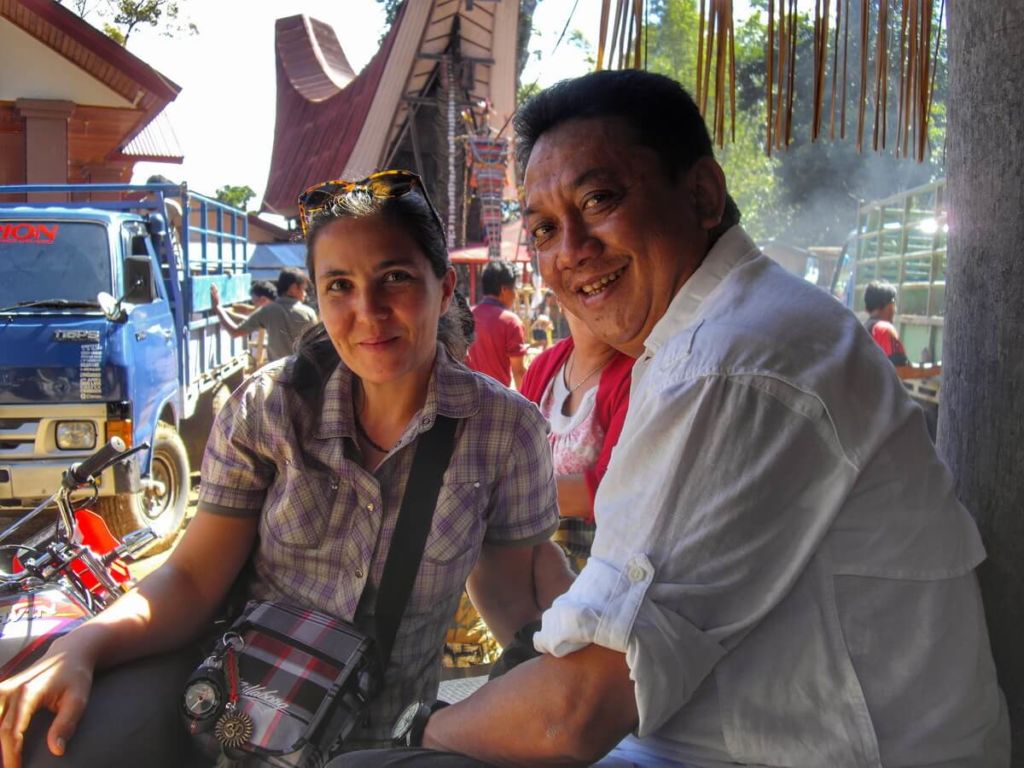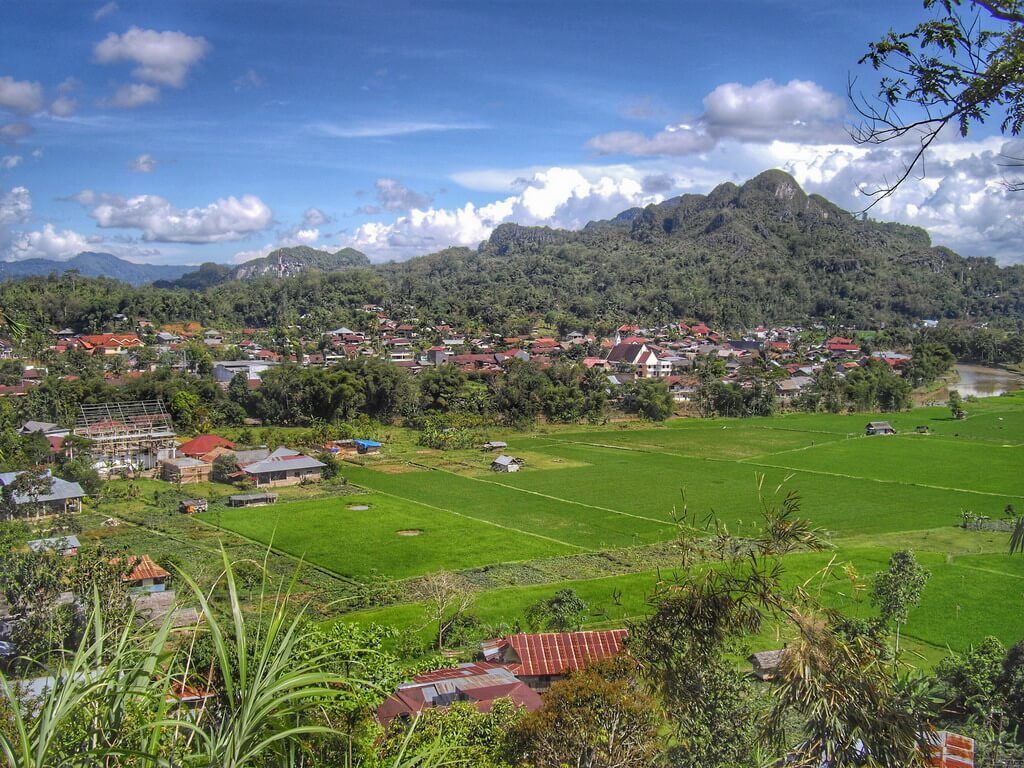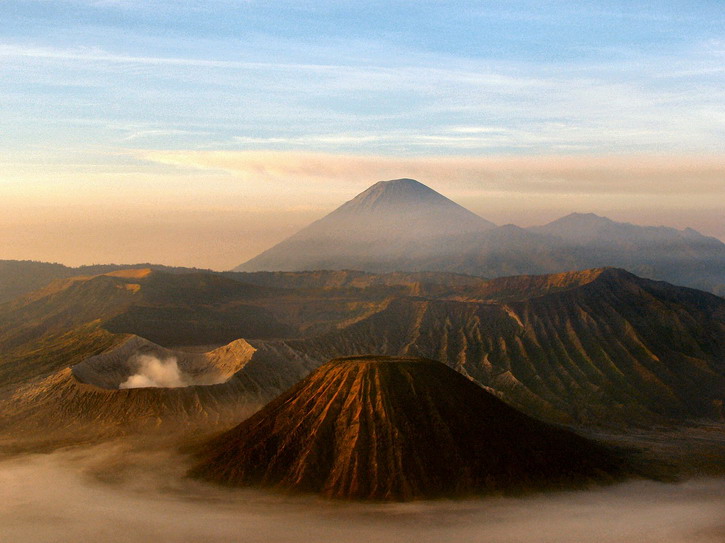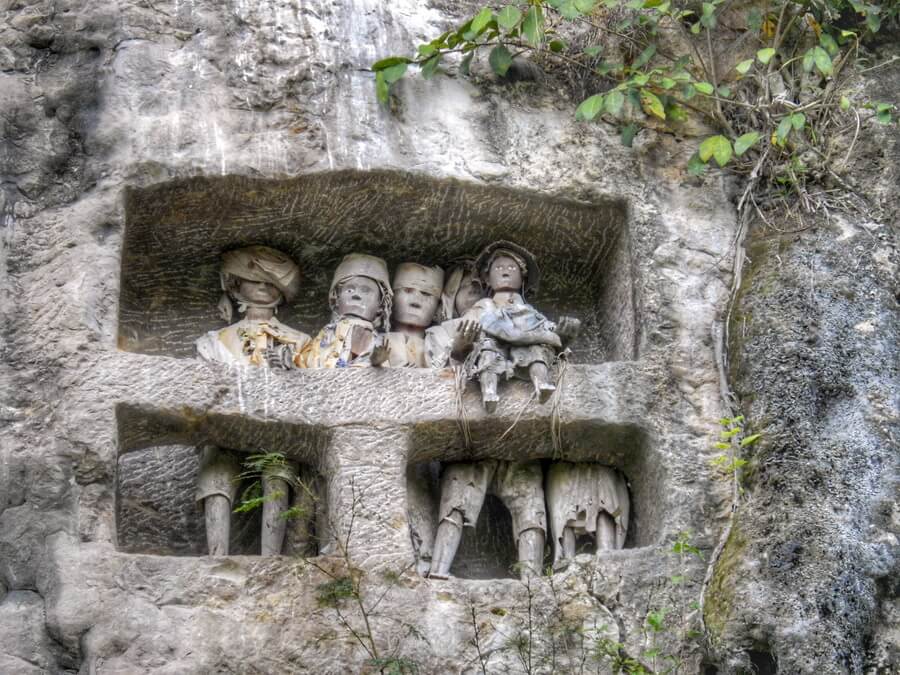Do you know the 3 main reasons for the fame of Sulawesi Island in Indonesia?
Less visited and known than Java and Bali, here are the 3 main reasons why travellers visit this little piece of Indonesian paradise:
- Diving in the Celebes Sea, known as one of the best diving spots on the planet and where you can find the 3rd largest atoll in the world, Taka Bonerate.
- Toraja coffee, a delicious blend of Arabica and Robusta, the best coffee I’ve ever had in my life.
- The funeral rites of the Toraja Country and the Aluk To Dolo, the animist religious custom transmitted orally.
It is these funeral rites and the Toraja Country that I will talk to you about today, through the funeral to which I was invited in Rantepao and Tagari. It is according to me the reasons why you should visit Toraja.
You should read this article if you are wondering why you should visit Toraja in Sulawesi and if you want to learn more about the funeral rites of the Toraja people.
If you visit Toraja or Sulawesi, a map can be extremely useful. The island is still away from mass tourism and local maps are more than approximate!


Why you should visit Toraja Indonesia ?
If you have read my article about my discovery of Khmer culture in Battambang, Cambodia or Bastar Dussehra Festival in India and if you are familiar with my blog, you know that I like to participate in local ceremonies because it is one of the best ways to discover a culture.
The island of Sulawesi, especially Tana Toraja, had fascinated me for a long time.
I had heard a lot about their funeral rites, including the Toraja mummies and the tombs in the cliffs.
So I was hoping to be able to witness one of their long funeral ceremonies and learn more about the aluk to dolo (the way of the ancestors), the oral tradition of the Toraja people.
I had the chance to meet locals who introduced me to their culture, the aluk to dolo and their rituals.
Discover funeral rites, Toraja weddings, go hiking, observe the incredible butterflies, admire the magnificent landscapes, taste the Toraja coffee, and above all chat with the adorable people.

But first, how I saved on my plane ticket by cutting my flight.
In Asia, there are two main airports or hubs, where you can often find very attractive prices, and from which you can go almost anywhere with a low cost: Bangkok and Kuala Lumpur.
We can often find a Qatar Airways flight to and from Paris Bangkok or Paris Kuala Lumpur for 400 or 500€. Then add a low cost flight, with Air Asia for example, to Ujung Padang / Makassar, the capital of Sulawesi for about 150€ round trip. You will still be very far from the 900-1000€ of a Paris-Ujung Padang!
Click here to check the prices to Bangkok or Kuala Lumpur
Click here to check the prices from Kuala Lumpur to Makassar
For more tips on how to save on your flight, read this article
Toraja funeral in an expat family.
The first morning of my arrival in Tana Toraja, in Rantepao, a family invited me for a private Toraja funeral.
Benjamin and his family were animist Christians, which may seem strange; but when you travel to different countries, you quickly realize that different peoples have converted, fortunately keeping many beliefs and customs of their original religion.
They came from different cities in Sulawesi, Indonesia and even abroad to celebrate the funeral of Benjamin’s mother-in-law. They therefore did not have time to organize the traditional one-week Toraja funeral.
I joined them around noon, in a place near our guesthouse. The mass was almost over when I arrived. The priest was introducing each member of the family to the assembly. Everyone told anecdotes and memories about the deceased and they laughed a lot.
Then, family photos were taken with the coffin, always with joy.

Buffaloes in Toraja funeral.
Just before we sat down to eat, we were shown one of the large buffaloes that will be sacrificed in honour of the deceased. In the Toraja religion, the sacrificed animal will follow the deceased into his new life to serve him and serve as a vehicle to reach this new world. It is also a way to show respect for the deceased and to show the wealth of the family.
People buy buffaloes and pigs that will be sacrificed during the funeral at the interesting market of Pasar Bolu. This market was built by Frederik, Benjamin’s brother.
Spotted buffaloes, the largest, those with blue eyes, are the most expensive. The average price for a buffalo is 20 million Indonesian rupees (about 1,300€).
The number of animals sacrificed indicates the wealth of the family.
The large funerals of the richest families can cost 375,000€/400,000€ just for buffaloes.
Buffalos live with the families and are cared for with great care, almost like a member of the family. It must be said that families often go into debt to buy them and that the Torajas’ entire life is organized around the preparation of their funeral.
Frederik will proudly show me the pictures of his very dear blue-eyed stained buffalo.
The funeral food.
For funerals, Torajas are used to preparing a very special dish: pa’piong. This meat, vegetable and coconut dish is cooked for several hours in bamboo.
We are served it, as well as various meats served with rice.
Toraja funeral’s processions.
Most of the guests leave right after dinner. Only the family and I stay for the procession in the mountains.
Large bamboos are attached to the coffin to carry it. With a huge burst of laughter, they invite me to follow them with a “let’s go!” The picture of the deceased is carried at the head of the procession and we walk in the streets of Rantepao.
We make a first stop near a group of tongkonans, the traditional toraja houses. Their roof is like a boat, the Toraja people coming from the sea. The front door is decorated with the horns of the buffaloes sacrificed at the family funeral. I found this custom in India, among the Nagaland and Niyshis tribes in Arunachal Pradesh. The exterior walls are covered with paintings of nature scenes.

We all receive a small bottle of water. After taking a sip, we all have to laugh at each other. Frederik, who joined me, keeps exclaiming “it’s tradition! it’s tradition! it’s tradition!”.
We continue on our way and the men start screaming. We are at an intersection and we start turning the coffin in all directions. Toraja Country is the country where the dead walk home. It is therefore a question of disorienting the deceased so that her soul does not find its way home to haunt her family.
We start climbing the mountain. The path is getting narrower and narrower and men have to cut the bamboos to continue to progress. The slope is steep and the ground slippery.
We finally reach the top and the view is magnificent. I will notice during the rest of my trip that, as in China, Torajas are used to build tombs in pleasant and beautiful places.

Tana Toraja: where living with the dead is common.
The family opens one of the two funeral homes they own and places the coffin on the ground. They are the richest family in Rantepao and the mountain belongs to them.
Everyone sings and prays and then the closest relatives enter the house. In the same momentum, they all start crying and screaming. For them, it is the completion of a process that can sometimes take months or even years.
When someone dies in Tana Toraja, his family calls him “To Makula”. It is believed that he is not really dead but simply sick. People continue to live with him, to feed him 4 times a day, to wash him, dress him, do his hair, talk to him, pray with him, even sleep with him. They can do it for months or even years until they are ready for the funeral. Rich families are generally the ones who keep the deceased the longest.
A few years ago, I read the testimony of an American woman who explained that she did the same thing for her baby. She explained that this process made it easier for her to accept her death.
This belief explains why this moment of this private funeral was so moving. The funeral is the time for the Torajas to let their deceased leave, after several months or years of cohabitation. It was an expression of deep sadness and not “occasional crying”. I insist on this because we could misunderstand what happens when we visit Toraja without knowing these beliefs.
It was extremely impressive to see everyone crying at the same time, inside and outside the house. I could feel their emotion and pain.
We then take the last pictures together.
The joy has returned and we are given candy and fruit juice.
We return to Rantepao, where relatives offer us a snack.
Where to stay in rantepao?
I recommend the beautiful Luta Resort Toraja. Ideally located in the centre of Rantepao but very quiet, it has a beautiful courtyard giving access to very comfortable, pleasant and clean rooms and suites. Its restaurant, by the river, is very intimate and offers local food at a very good price.
With a French photographer we met in Rantepao, we went to see the prices “for fun”, thinking it was out of our budgets. When we found that this was not the case, we made it our “base”. Don’t rely on Agoda’s photos, which don’t really do justice to the beauty of the place.
Click here or on the pic below to check the price and availability for your dates (Agoda)

Or check the price with Booking here
Visit Toraja FAQ.
Contact me if you do not want to organize your trip alone and want to travel as close as possible to the population with me. Thanks to my experience, you will discover the Toraja culture as closely as possible and can even save on the price of your flight tickets.
The Toraja Country or Tana Toraja is located in the centre and south of the Indonesian island of Sulawesi.
The main cultural city is Rantepao.
Tana Toraja means “land of the Torajas”. But the original Tana Toraja has been divided into two: Tana Toraja with Makale as its capital and Toraja Utara with Rantepao as its capital.
Although the Mamasa Valley, in the western part of Sulawesi, does not belong to the Toraja, funeral customs have much in common, as do houses.
There is no airport in Toraja Country, but the nearest one is Makassar. Consult my tip above to save several hundred euros on your flights.
It takes 8-9 hours by bus from Makassar to Rantepao, or 5 hours by taxi, through beautiful landscapes.
The funeral season is in August, but I was there in September and there was still a lot of funerals.
It all depends on your desires and tastes. If like me you are passionate about cultural discoveries, hiking and beautiful human encounters, you can easily spend 3 weeks there without getting bored, also exploring the Mamasa Valley.
Do I need a visa?
Check below. It’s free, fast and easy.
You are a travel agency or a tour operator looking for a bilingual French-English guide for your next tour in Sulawesi?
Please, contact me! In addition to being a seasoned traveler, I have worked for 19 years in the field of traveler customer relations, conflict management and connection breakdowns in international stations. You can learn more and take a direct phone appointment with me by clicking here, contact me via LinkedIn (link in the sidebar) or via the contact form (link in the bottom menu).
Conclusion – Visit Toraja.
This first funeral in Toraja Country was only the first of a long list of discoveries about the culture of the Toraja people and the centre of Sulawesi.
In the following days, I was invited to a large funeral in Tongkonans. I then discovered the tau-tau, the wooden effigies representing the deceased, the tombs in the cliffs, the other forms of Torajas burials, the burials reserved for babies and children and the various traditional paintings, during hikes in extraordinary landscapes. I also learned more about the walking dead of Toraja.
The Toraja Country, still away from mass tourism, has a lot to offer to curious travellers.
Have you ever visited Sulawesi or Toraja Country? What was the purpose of your visit?
Have you ever heard of the Torajas funeral rites and their unique animist culture? Do you want to visit Toraja?
For other articles on Indonesia, consult this category
Share this article with your family or friends who are planning a trip to Sulawesi or are interested in ethnology.
This article may contain compensated links. Disclaimer: As an Amazon Associate I earn from qualifying purchases. Read our disclosure policy to know more.


